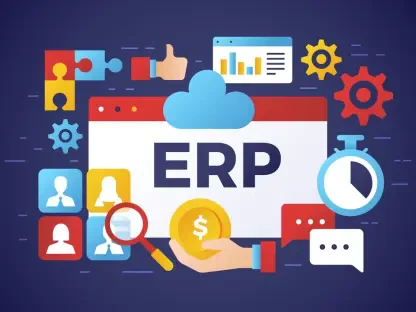The E-commerce SaaS (Software as a Service) market is set for significant evolution between 2025 and 2033, driven by advancements in technology and shifting consumer behaviors. This period promises transformative changes fueled by innovative product categories, rapid technological advancements, and the effects of global events. By dissecting historical trends and current market dynamics, this comprehensive analysis offers valuable insights into the future trajectory of the E-commerce SaaS sector.
Emergence of Revolutionary Product Categories
In the coming years, revolutionary product categories such as Store Management, Express Service, and Customer Service are expected to profoundly reshape the E-commerce SaaS landscape. Store Management solutions are increasingly sophisticated, offering features that streamline inventory control, order processing, and customer relationship management. These tools are crucial in enhancing operational efficiency, allowing businesses to manage resources better and provide superior service to their customers. Express Service innovations are revolutionizing delivery logistics, ensuring faster and more reliable shipping options. The growing demand for same-day and next-day delivery services underscores the importance of these solutions in meeting consumer expectations. Finally, Customer Service tools, leveraging AI and machine learning, are providing personalized and efficient support, significantly improving the customer experience by anticipating customer needs and resolving issues promptly.
These emerging product categories are not only enhancing operational efficiency but also setting new benchmarks for consumer expectations in the E-commerce sector. As businesses adopt these advanced solutions, they can offer more streamlined and user-friendly shopping experiences. The integration of AI and machine learning in Customer Service tools, for example, allows for more efficient handling of customer inquiries, leading to higher satisfaction rates. Meanwhile, ongoing advancements in Store Management software enable businesses to better manage their inventories, reducing the likelihood of stockouts and ensuring that customers have access to the products they want when they want them. These enhancements collectively contribute to creating a more seamless and enjoyable shopping experience for consumers.
Significant Applications Driving Market Growth
Several key applications are driving growth in the E-commerce SaaS market, including Online Shopping Platforms, Shipping Companies, E-retailers, and Online Shopping Consumers. Online Shopping Platforms continually evolve to offer seamless and intuitive user experiences, integrating advanced analytics and personalized recommendations to enhance customer engagement. By providing a more tailored shopping experience, these platforms can increase customer loyalty and boost sales. Shipping Companies are leveraging E-commerce SaaS solutions to optimize their logistics networks, reduce costs, and improve delivery times. Efficient logistics are crucial in an era where consumers expect quick and reliable delivery services. E-retailers are adopting these technologies to streamline operations, manage inventory more effectively, and deliver better customer service. The combined effect of these applications is significantly improving the overall efficiency and effectiveness of the E-commerce ecosystem.
Online Shopping Consumers are reaping the benefits of these advancements through improved shopping experiences and faster delivery times. The integration of advanced analytics and AI-driven recommendations helps consumers discover products that match their preferences, leading to a more satisfying shopping experience. Furthermore, the optimization of logistics networks by Shipping Companies ensures that products are delivered promptly, meeting the high expectations of modern consumers. As a result, the E-commerce sector is becoming more consumer-centric, with businesses increasingly focusing on enhancing the customer experience. This consumer-centric approach not only drives repeat business but also attracts new customers, further propelling market growth.
Rapid Acceleration of Innovation
Innovation is a driving force in the E-commerce SaaS market, with the sector experiencing a surge in R&D investments, the development of disruptive technologies, and ambitious market expansion efforts by industry leaders. Companies are focusing on developing AI-driven solutions, blockchain technology for secure transactions, and advanced analytics for better decision-making. These technological advancements are optimizing product performance and expanding downstream applications, fueling market growth and propelling the E-commerce SaaS market into a new era of transformation.
The rapid acceleration of innovation is disrupting traditional business models, forcing companies to adapt to stay competitive. AI-driven solutions are enhancing various aspects of E-commerce operations, from personalized marketing to customer service. Blockchain technology is providing secure and transparent transactions, boosting consumer confidence in online shopping. Advanced analytics are enabling businesses to make data-driven decisions, optimizing their strategies and improving overall performance. These innovations are not only fueling growth but also creating new opportunities for businesses to differentiate themselves in the competitive E-commerce landscape.
The market’s evolution is further evidenced by the increasing focus on sustainability and social responsibility. Companies are developing eco-friendly solutions and adopting practices that minimize environmental impact. This shift is driven by growing consumer awareness and demand for sustainable products and services. By integrating sustainability into their operations, businesses can attract eco-conscious consumers and gain a competitive edge. Moreover, the emphasis on social responsibility is leading to the development of ethical business practices, fostering trust and loyalty among customers.
Competitive Landscape and Key Players
The competitive landscape of the E-commerce SaaS market is shaped by major players such as Magento Commerce, Dynamics 365 Commerce, Salesforce Commerce Cloud, Shopify Plus, and Commercetools. These companies are driving market evolution through strategic adoption practices and advanced technological implementations. In North America and Europe, these industry leaders are making significant strides in market expansion, characterized by the adoption of cutting-edge technologies, strategic partnerships, and a focus on enhancing customer experiences. The presence of these key players in these regions creates ample growth opportunities and sets the stage for continued market development.
These companies are at the forefront of innovation, continually pushing the boundaries of what is possible in the E-commerce SaaS sector. By investing in R&D and adopting advanced technologies, they are shaping the future of E-commerce and setting new benchmarks for the industry. For instance, Magento Commerce is known for its robust and flexible platform, which allows businesses to customize their online stores to meet specific needs. Salesforce Commerce Cloud leverages the power of AI to deliver personalized shopping experiences, while Shopify Plus offers a scalable solution for high-growth businesses. Commercetools, on the other hand, focuses on providing a headless commerce platform that enables businesses to deliver superior customer experiences across multiple channels.
These strategic efforts are not limited to technology adoption; they also encompass partnerships and collaborations with other industry players. By joining forces, these companies can leverage each other’s strengths and create synergies that drive market growth. Moreover, their focus on enhancing customer experiences is evident in the development of user-friendly interfaces, personalized recommendations, and efficient customer service solutions. These efforts collectively contribute to a more competitive and dynamic E-commerce SaaS market.
Regional Market Dynamics
North America, led by the United States, plays a crucial role in the global E-commerce SaaS market. The region’s high adoption rate of advanced technologies and the presence of key market players contribute to its significant growth. Similarly, Europe is anticipated to experience substantial growth, driven by technological advancements and increasing investments in the sector. The Asia-Pacific region is also emerging as a significant player in the E-commerce SaaS market. Countries like China, India, and Japan are witnessing rapid adoption of E-commerce technologies, driven by a growing middle class and increasing internet penetration. South America and the Middle East and Africa are also showing promising growth potential, with increasing investments and technological adoption in these regions.
The regional dynamics in North America and Europe are characterized by a high level of technological sophistication and a strong focus on innovation. Businesses in these regions are early adopters of new technologies, which gives them a competitive edge in the E-commerce market. The presence of major industry players further fuels growth, as these companies drive market trends and set industry standards. The strong economic environment and well-established infrastructure in North America and Europe also support the rapid adoption of E-commerce SaaS solutions.
In contrast, the Asia-Pacific region’s growth is driven by different factors. The increasing internet penetration and rapid urbanization in countries like China, India, and Japan are creating a large and growing market for E-commerce. The rising middle class in these countries is driving consumer demand for online shopping, while businesses are investing in advanced E-commerce technologies to meet this demand. The competitive landscape in the Asia-Pacific region is characterized by a mix of local and international players, each vying for market share in this burgeoning market.
Market Size and Growth Projections
The global E-commerce SaaS market is projected to reach multi-million USD by 2033, demonstrating a considerable rise relative to 2025. This growth is driven by consistent expansion in major regions and increasing new investments anticipated to enter the field. Despite intense competition, the market’s optimistic outlook is propelled by the clear global recovery trend. The combined impact of technological advancements, strategic investments, and evolving consumer behaviors is expected to drive significant growth in the E-commerce SaaS market over the next decade.
The market’s growth projections are supported by several key factors. First, the ongoing advancements in technology are enabling businesses to offer more sophisticated and efficient E-commerce solutions. The adoption of AI, blockchain, and advanced analytics is optimizing various aspects of E-commerce operations, from inventory management to customer service. These technological advancements are not only improving efficiency but also creating new opportunities for businesses to differentiate themselves and achieve a competitive edge.
Second, the increasing investments in the E-commerce sector are driving market growth. Companies are investing heavily in R&D to develop innovative solutions that meet the evolving needs of consumers. These investments are also supporting the development of new business models and market expansion efforts. Furthermore, the growing consumer demand for online shopping is driving market growth. As more consumers embrace online shopping, businesses are investing in E-commerce SaaS solutions to enhance their operations and provide a better shopping experience.
Impact of Global Events
Global events such as the Covid-19 pandemic and geopolitical conflicts, particularly the Russia-Ukraine war, have had direct and indirect impacts on the E-commerce SaaS market. These events have influenced market dynamics, causing fluctuations and shaping recovery trajectories. The Covid-19 pandemic accelerated the adoption of E-commerce technologies as businesses and consumers adapted to new realities. Lockdowns and social distancing measures forced many brick-and-mortar stores to pivot to online platforms, leading to a surge in demand for E-commerce SaaS solutions. This shift was not just a short-term response; many businesses recognized the long-term potential of online sales and continued to invest in E-commerce technologies even after initial restrictions were lifted.
Geopolitical conflicts such as the Russia-Ukraine war have affected supply chains and market stability, prompting companies to adopt more resilient and flexible E-commerce solutions. The disruption of global supply chains highlighted the importance of having robust logistics systems and contingency plans. In response, many companies turned to E-commerce SaaS solutions to optimize their supply chain operations and ensure continuity amid uncertainties. The conflict also underscored the need for secure and transparent transactions, leading to increased adoption of blockchain technology in the E-commerce sector.
These global events have also influenced consumer behavior, with many people becoming more comfortable with online shopping and expecting higher levels of service and convenience. As a result, businesses are under pressure to continually innovate and improve their E-commerce offerings. This period of rapid change has underscored the importance of agility and adaptability in the E-commerce SaaS market, as businesses navigate a complex and ever-changing landscape.
Effective Marketing Strategies
The E-commerce SaaS (Software as a Service) market is set to experience substantial changes from 2025 to 2033, driven by advancements in technology and shifting consumer behaviors. This period is expected to bring transformative changes, powered by new product categories, rapid technological progress, and the impact of global events.
The analysis of historical trends and current market dynamics provides valuable insights into the future path of the E-commerce SaaS sector. For instance, increased use of artificial intelligence and machine learning is likely to streamline operations, personalize customer experiences, and optimize supply chains. In addition, advancements in big data and analytics will enable better decision-making and more targeted marketing strategies.
The rise of mobile commerce and the growing importance of social media for sales and customer engagement are also key factors. Businesses will need to adapt to these changes to stay competitive, leveraging SaaS solutions to enhance their digital presence and customer service capabilities.
Companies that harness these technological advancements and respond to evolving consumer preferences will be well-positioned for success. The future of the E-commerce SaaS market is promising, marked by innovation and the potential for significant growth.









